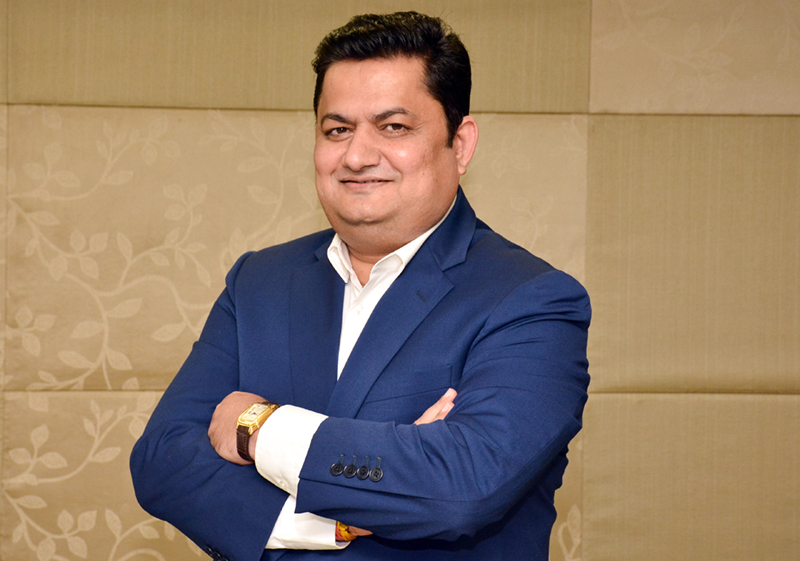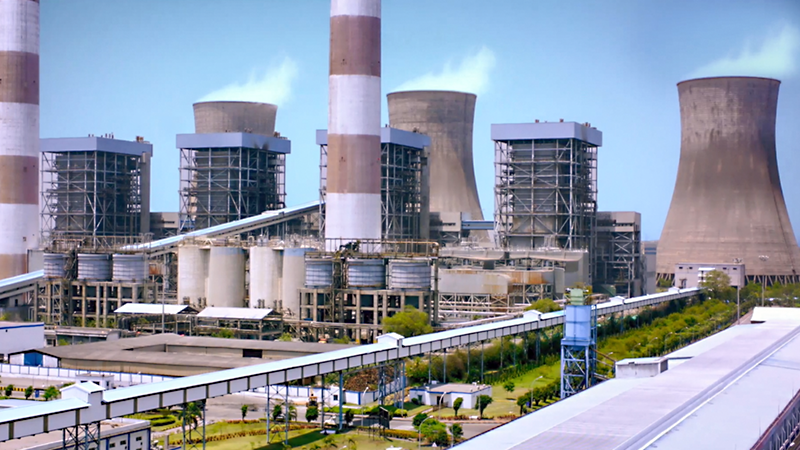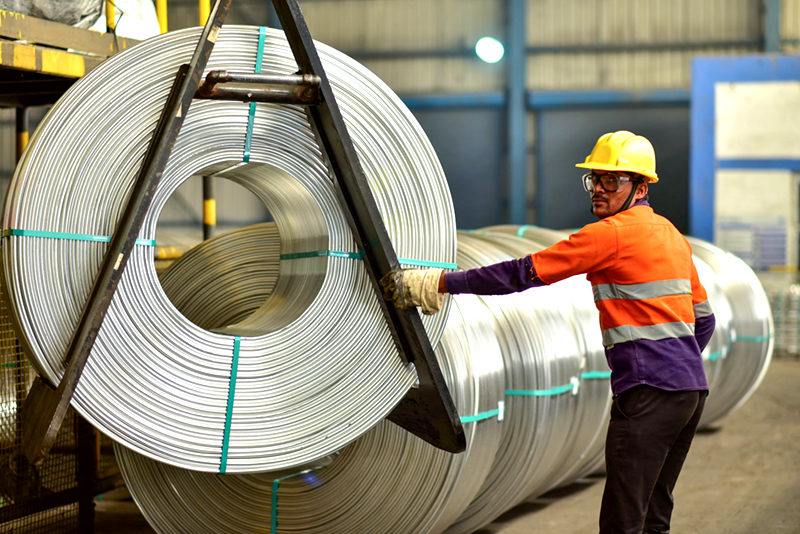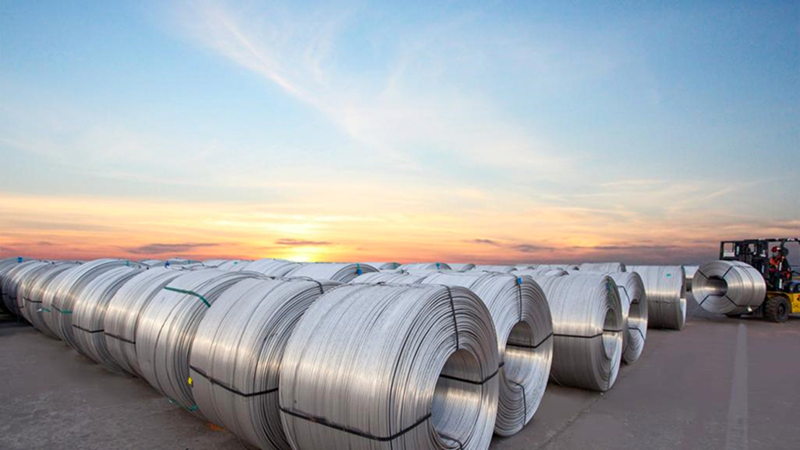“Aluminium is indispensable for the wire and cable industry owing to its high structural strength, light-weight, high conductivity, high ductility, non-corrosiveness, and non-magnetic properties.”
Vedanta Ltd. is India’s largest producer of aluminium. One of the largest producers of power in the country — Vedanta Ltd. is also one of the largest manufacturers of wire rods globally with state-of-the-art technologies committed to meeting world-class quality standards. Wire & Cable India recently interviewed Mr. Rahul Sharma, CEO – Aluminium Business, Vedanta Ltd. wherein he dives into the product range and R&D facilities of the company and reveals the opportunities and challenges of aluminium as a raw material in the wire and cable sector.
Wire & Cable India: Could you discuss the impact of aluminium in today’s wire and cable industry?
Rahul Sharma: Aluminium is already the second most used metal in the world today and has the potential to become the most important commercial metal. Aluminium, today, is indispensable for the wire and cable industry owing to its high structural strength, light-weight, high conductivity, high ductility, non-corrosiveness, and non-magnetic properties. The major areas of application for aluminium include cables, busbars, overhead transmission lines, motors, foil windings, electrolytic capacitors, heating elements, heat sinks, and many more.
India is the world’s third-largest energy-consuming country, due to its rising population, rising incomes, and improving standards of living. It is currently the largest consumer of aluminium-based wires and cables, excluding China, with an annual consumption of 1.2 million tonnes of aluminium wire rods. India’s per capita consumption of aluminium in the electrical sector is at 0.9 kgs, while the world average is about 1.3 kgs, which stands testimony to the fact that aluminium usage in the domestic industry is poised for significant growth.
Access to affordable, reliable, and clean energy will be a key enabler in realisation of India’s vision of a USD 5 trillion economy. From sustainably leveraging large-scale coal reserves for power generation, to ensuring energy access to all corners of the country, institutionalising quality controls for energy-efficient machines and consumer goods, and investing in and harnessing substantial solar/other forms of renewable energy, India’s post-COVID recovery phase is going to be a very dynamic period in its energy development. And Vedanta’s Aluminium Business, as the world’s largest producer of aluminium wire rods, ex-China, is poised to cater to all current and emerging needs of the electrical and its ancillary industries.
WCI: What are the key properties and USPs of aluminium over other conventional metals?
RS: Aluminium is versatile, by virtue of its exceptional design flexibility as well as superb conductivity. Among base metals, only copper has a higher conductivity than aluminium. An aluminium wire will need ~1.5 times larger cross-section to pass the same current, but it is two times lighter and non-corrosive in the face of weather elements, which is why only aluminium wire rods are used for transmission lines. The light weight of aluminium wire rods lends itself very well to non-sagging of transmission lines, which is of vital importance while ensuring power distribution over long distances. Vedanta produces High Strength Low Sag special grade wire rods from primary aluminium, with purity levels as high as 99.99 percent and a significant lifetime. This enables us to deliver high-quality products with superior conductivity over conventional electric grade conductors, for various applications in the power industry.
WCI: How do you view the rate of aluminium adoption by the wire and cable industry over the past few years and where is it headed in the future?
RS: The wires and cables sector is a direct beneficiary of the power generation and distribution infrastructure, as the market comprises nearly 40 percent of the electrical industry in India. Market research says, in volume terms, the domestic wires and cables industry registered a CAGR of 22 percent over the previous five fiscals to reach about 17 million km in FY 2018-19.
The wire and cable industry is poised to register significant growth in the next five years. The global wire and cable market is expected to rise to an estimated USD 332.65 billion by 2026, registering a CAGR of 6.45 percent in the period of 2019-26. In India, the wire and cable market comprises nearly 40 percent of the electrical industry. It is growing at a CAGR of 15 percent owing to the growth in power and infrastructure sectors in the country. Moreover, global investors now consider India as a potential market for high voltage (HV) and extra high voltage (EHV) cables.
The growth in the industry will be fundamentally driven by the recent developmental push in power and infrastructure segments, through government policies. The renewable energy push and government projects for electrification, housing development, and smart cities will further propel the industry’s growth. Consequently, the aluminium wire rod market is growing at a fast pace with substantial growth rates over the last few years. It is estimated that the market will grow significantly in the 2020-27 period. Rapid urbanization with exponential growth in the building and construction sector, electrical transmission, and distribution networks are driving demand for the aluminum wire rod market.
WCI: Considering the aspect of 100 percent electricity transmission across India, how do you see the opportunities for aluminium?
RS: The four pillars of economy, population, urbanization, and industrialization shall keep India at the heart of the global energy system. Key factors which shall drive the electrical sector, and consequently scale up the consumption of aluminium in the sector, are:
- Increased migration into cities and urbanization, which will require increased construction and infrastructure to ensure the availability of essential utilities to people.
- Procurement of electrical appliances, air conditioning units and other white goods, as necessities of modern life.
- Between 2021-26, the Indian government has planned an investment of USD 2.15 billion to electrify rural households, bolstering the country’s power transmission network.
- The Government also plans to double the share of installed electricity generation capacity of renewable energy to 40 percent by 2030.
- The Electric Vehicle (EV) segment is to significantly drive demand for electricity (and consequently, electrical infrastructure) in the next 5-10 years, with the declining cost of EV technology, tightening emission norms and the central government’s push for EV adoption.
- Upcoming large-scale industrial projects, like Vedanta’s proposed aluminium park at Jharsuguda in Odisha, and the government’s visionary projects like 100 percent electrification of Indian Railways and Smart Cities are also expected to boost the demand for electricity.
- With an opportunity to sell surplus power, international projects like Cross Border Grid Interconnection to link the national grids of neighbouring countries can also drive electricity demand.
WCI: What do you think are the challenges of aluminium as a raw material in the wire and cable sector?
RS: Aluminium wire conductors and cables can be produced to offer the same capabilities as currently used materials, with negligible cost implications. As India’s largest producer of aluminium, Vedanta has been catering to the raw material needs of the power sector with its superior quality wire rods, produced using global best technologies. In this regard, we are also a key enabler and proponent of indigenously developed products, domestic manufacturing, value-addition, and supply of quality products to the downstream industries.
Also, companies such as Vedanta Aluminium, are focused on the development of customized variants for niche applications. With our engineering prowess, deep R&D capabilities, a vibrant Innovation Cell, Centre of Quality Excellence, and Customer Technical Service (CTS) function, we are well resourced to meet the current and evolving needs of domestic and global customers.
The challenges, therefore, are not so much on the technical aspects, as they are pertaining to regulatory frameworks. A few examples are:
The mining of bauxite, the ore of aluminium, is still not viable in India, despite us having the world’s 5th largest bauxite reserves. It is a matter of great concern that despite aluminium’s relevance and recognition as one of the 12 Champion Industries, no Metallurgical Grade Bauxite Mine has been successfully auctioned in the last 6 years since the inception of MMDR Act 2015. This is largely linked to the unviable and arbitrary determination of Average Sale Price (ASP) of Metallurgical Grade of Bauxite. The price determined from the current ASP system is artificially increased up to 300 percent to 400 percent by including expenditures incurred beyond the mining lease, rendering the production of aluminium unviable in India. The Indian Aluminium Industry has to meet their bauxite requirement from imports rendering them economically unviable and globally uncompetitive.
Secondly, despite a production capacity of 4.1 MTPA, 60 percent of the domestic demand of 3.7 MTPA is being met through imports, majorly in the form of scrap. Since FY11, aluminium consumption increased by 68 percent, total aluminium imports increased by 145 percent and aluminium scrap imports increased by 187 percent. The absence of any quality standards and regulations for scrap has serious implications on the domestic industry, from the manufacturing of sub-standard products (which bring with them serious safety and health concerns) to India becoming the world’s dumping ground in an industry sector where it has all of the natural advantages – from rich coal and bauxite reserves to skilled manpower, a strong primary and downstream processing capability and an evolved manufacturing base. The power industry should ensure that it uses only high-quality primary aluminium for all kinds of cables and conductors to ensure the highest levels of quality and eliminate any electricity and conductivity losses that cost the nation’s economy very dearly when sub-standard materials are used.
WCI: What has been the impact of the pandemic on your business?
RS: The pandemic’s unprecedented and rapidly evolving nature forced industries to change and adopt digital solutions quickly. At Vedanta Aluminium, we took this as an opportunity to retool our business. Aluminium production is a continuous process industry. We accelerated the adoption of our digital and intelligent automation solutions to sustain the production of this crucial and strategic raw material for the country. This ensured real-time decision-making that in turn, allowed us to respond to fluid market conditions, changing customer needs, disrupted supply chains and employee safety with agility and accuracy. Our tech and automation initiatives enabled us to unlock value across our entire value chain in ways that provided a positive step-change in productivity as well as design and quality. So, despite the constraint of manpower and resources, our aluminium smelters have not powered down even for an hour.
WCI: What policies do you want the government to implement in the near future?
RS: Aluminium is critical to sectors of national importance like space exploration, electrification, transportation, aviation, power, defence, building & construction, and sustainable packaging. The demand for aluminium demand is directly linked with economic activity in the country with sectors such as electrical, automobile, building & construction consuming a major chunk of aluminium in India. However, to truly unlock the potential of the Indian Aluminium Industry and make India the manufacturing and value-addition hub of the world, there are four key levers that the government must act upon:
- First, promotion of aluminium usage in government projects should be a priority area. With the aim to make India a USD 5 trillion economy, the government is rolling out numerous high-impact projects, which have ample opportunities for aluminium.
- Second, the focus should be given to build domestic capability for critical application development for such sectors under Make in India. Aluminium has potential for myriad uses, majority of which are yet to be explored by the domestic downstream sectors.
- Third, the potential of aluminium industry should be acknowledged and recognised as a core sector with a National Aluminium Policy that will encourage, protect, and boost the domestic aluminium industry. The primary aluminium industry, with its multifold value chain, is playing a major role in the nation’s development by eradicating poverty in the interior regions where we are operating, by providing sufficient local employment and doing various quality CSR programmes to elevate these regions to multi-fold. Such industry has to be protected by the nation and supported through structured policies.
- And finally, domestic capability needs to be promoted for these critical sectors. Besides enhancing domestic capacity and reducing import dependency and subsequently trade deficit, it will also generate huge employment opportunities in our country. We are definitely on the right path, but there is still a long way to go.
In this regard, the policy loopholes that need to be addressed include:
- There is an urgent need for a strong anti-dumping policy for Aluminium. India has currently overtaken China as the world’s largest aluminium scrap importer and is slowly emerging as the global dump yard of scrap aluminium in the absence of any quality/BIS standards for scrap recycling/ usage and imports in the country.
- Discourage low-quality aluminium imports, by raising the customs duty on primary aluminium and scrap imports to 10 percent from 7.5 percent and 2.5 percent respectively at par with primary metal to proposed 10 percent, as in line with other non-ferrous metals like copper, zinc, lead, nickel, tin etc.
- Correction of the anomaly of inverted duty structure on critical raw materials imported for the industry, which results in high cost of production. It also needs to reduce basic customs duty on critical raw materials for the aluminium industry value chain. Resolving this will effectively help in lending support to the industry as the cost of production of aluminium metal in India has substantially increased (~25-30 percent for the overall industry) in the last 3-5 years due to the rising cost of critical raw materials, inverted duty structure on import of raw materials, increase in various taxes/cess like coal cess, electricity duty, and logistics costs etc.
- The government also needs to safeguard the interests of the downstream industry by raising the duty rate on two grades of downstream aluminium products to 10 percent and 12.5 percent respectively from 7.5 percent and 10 percent.
- As aluminium is a 100 percent recyclable metal, it would be prudent for India to facilitate a domestic eco-system for scrap recycling to encourage efficient utilization and recycling of indigenous scrap and promote the circular economy. Further, there should be complete clarity with regard to which applications can use the recycled aluminium products through an established BIS Standard at par with global practices.
WCI: What is the current installed capacity at Vedanta being allocated to the wire and cable sector? Also, what is the future roadmap?
RS: Vedanta Aluminium has a wire rod production capacity of 580 kilometric tonnes, delivering high-quality products with superior conductivity over conventional electric grade conductors, for various applications in the power industry. Vedanta produces High Strength Low Sag special grade wire rods from primary aluminium, with purity levels as high as 99.99 percent and an appreciable lifecycle.
“Vedanta Aluminium has a wire rod production capacity of 580 kilometric tonnes, delivering high-quality products with superior conductivity over conventional electric grade conductors, for various applications in the power industry.”
Our R&D facility continually explores newer applications of aluminium through new alloys and innovations in value-added products. With our engineering prowess, deep R&D capabilities, a vibrant Innovation Cell, Centre of Quality Excellence and Customer Technical Service (CTS) function, we are well resourced to meet the current and evolving needs of the domestic and global customers. We are also working with global technology experts in aluminium and aluminium alloys for stepping up our competitive edge across the entire bouquet of product offerings. We are working with new-age startups and research institutes to explore emerging applications of aluminium, to cater to the evolving needs of the industry.
“Our R&D facility continually explores newer applications of aluminium through new alloys and innovations in value-added products.”
We are working on application-centric customizations of our wire rods portfolio for the power industry, like power transmission in coastal belts, which have specific requirements due to their climatic conditions. Apart from conventional EC Wire Rods, we have added other grades like Alloy Rods with M, O, T4 tempers and AL-59 to our portfolio. In view of the development of new power transmission and distribution grids by global power incumbents, AL-59 alloy conductors would have a special significance while designing transmission line networks, as the properties of these conductors enable superior power evacuation while optimising the cost of the entire grid. Further, we are exploring special grade conductors like HTLS (High-Temperature Low Sag Conductors) or STAL (Heat Resistant Aluminium Zirconium Alloy). Zirconium doped aluminium alloys maintain their electrical and mechanical properties at elevated temperatures as well, thus making these conductors cost and energy-effective with enhanced capacity.
WCI: Elaborate on the technology initiatives that are driving the company ahead.
RS: Vedanta Aluminium has always been a digital-first and pro-technology company. We have led innovation from the front in the Indian Aluminium industry, COVID has only accelerated the process for us. Technology and digitalization of our processes have played a major role in ensuring business continuity especially in times where the industry has been battered by the onset of the global public health crisis, while also helping us monitor and operate our plants with safety, precision, and efficiency. Some of our key innovations, which aided in business continuity are:
- Vedanta’s smelter at Jharsuguda is India’s first, and the world’s third smelter to deploy Digital Smelter Solution using digital twin technology, which allows for remote monitoring and control of potline operations, enhances energy efficiency, and arrests wastage of material.
- We have deployed first-in-the-industry Deep Learning algorithms and other cutting-edge technologies for Advanced Asset Performance Management at our power plants.
- Manufacturing Execution System (MES) implemented across our plants ensured visibility of all critical plant operations and allowed for decision making remotely through mobile applications, thus ensuring seamless sustainability of operations while employees can maintain social distancing and yet fulfil their activities on the plant floor.
- We have developed Digital Logistics Control Towers for coal, alumina and bauxite which use classical Machine Learning and OR (Operations Research) based mathematical modelling to reduce commodity costs, pilferages, and process ineffectiveness from mines through plants to ports.
- Vedanta Aluminium and Power is the first metal and mining company in India to implement full-fledged S4HANA, automating and integrating all functional processes.
- The complex and diverse procurement of commodities, materials and services are fully automated unlocking substantial cost reduction, faster O2C cycle and business realizations.
- Robotics Process Automation is also used for shared services processes, in commercial, finance, HR and supply chain to optimise repetitive activities.
- Our plants also use vision analytics and contextual analytics in multiple plant sites like identification of hot spots in ICTs (information and communication technology) for improving asset reliability.
WCI: Vedanta Aluminium recently launched ‘#GreenHearts’ campaign. Tell us more about this campaign.
RS: The #GreenHearts campaign launched by Vedanta during the Van Mahotsav Week is a plantation drive that encourages all to plant a sapling in solidarity with COVID warriors and all who have been affected by the pandemic. The initiative rolled out under the Vedanta Cares Green Cover project, has a two-pronged objective – to unite people with the hope of a better future as the pandemic has affected one and all and to encourage people to plant saplings in solidarity with COVID warriors and in the memory of those who lost the fight to COVID.








